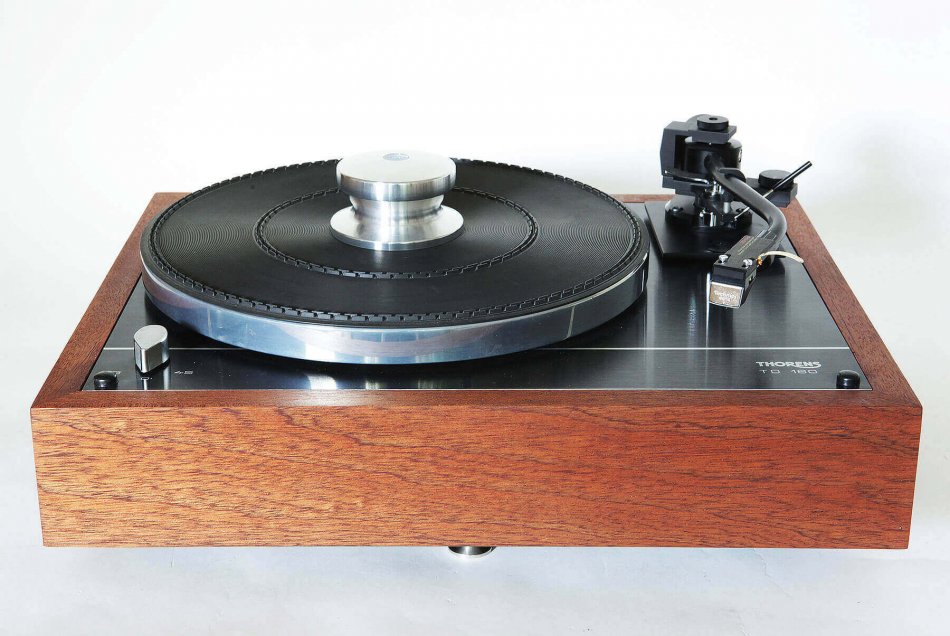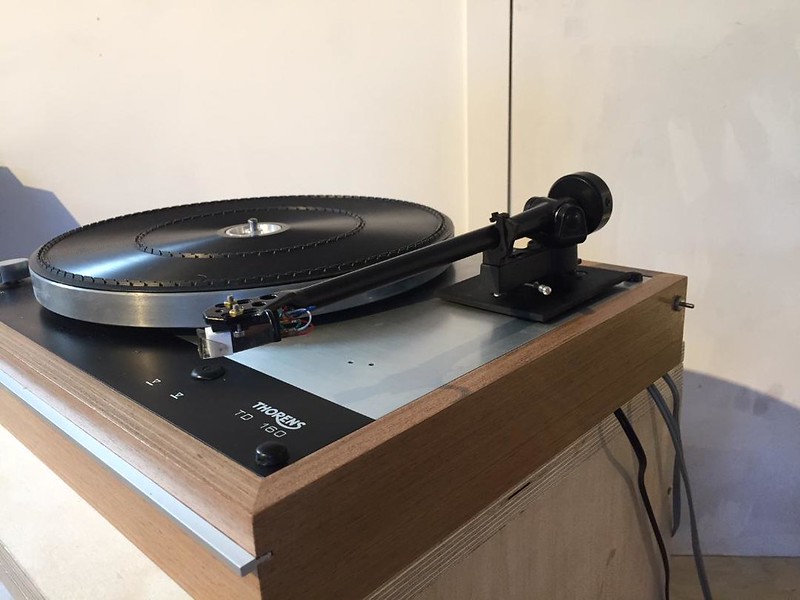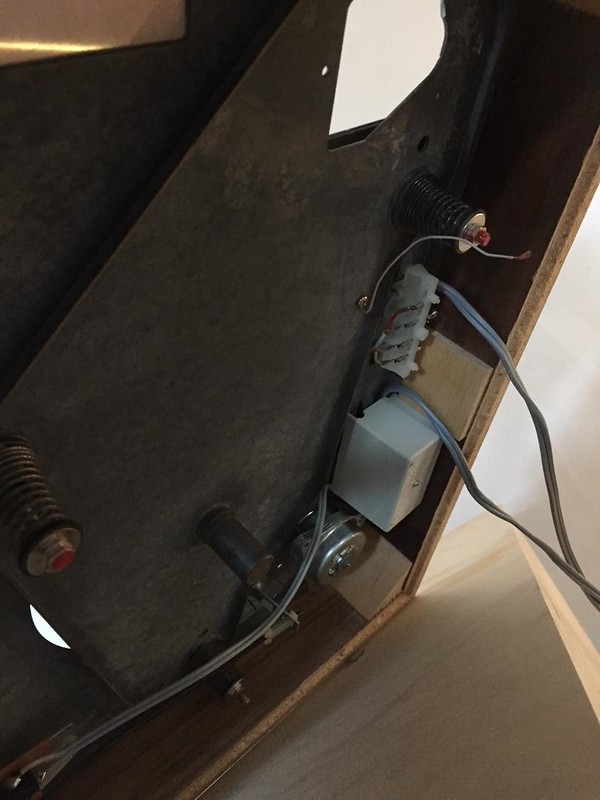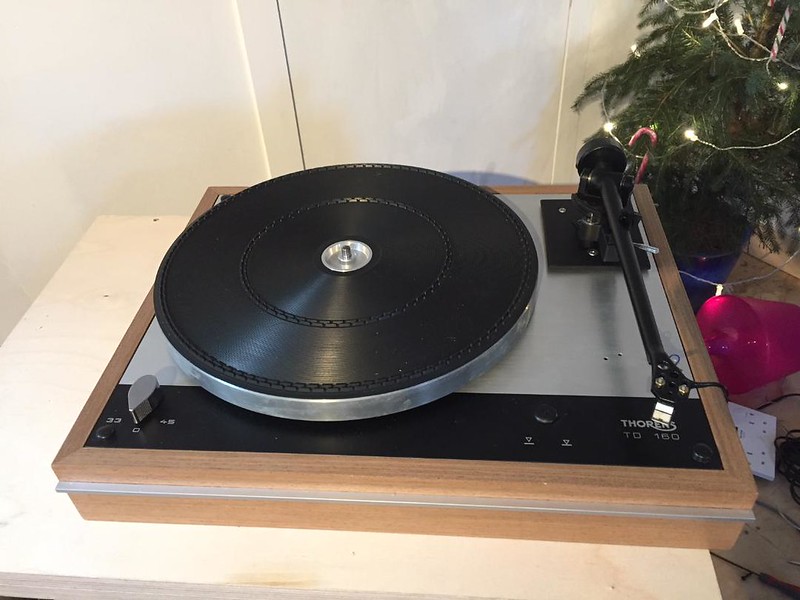The following assumes that all connections are clean and tight from phono cartridge pins through RCA plugs at the phono stage and/or amplifier phono input, and that you have access to a multimeter.
Assuming from the thread title that yours is a TD160C (aka Series I) it would have originally included a TP16 tonearm. Like Rega RB series tonearms, this vintage Thorens arm is earthed to the amplifier via the -ve shield of one channel, hence, there is no separate ground wire present that need be connected to the amp. While Thorens made the internal to external wire connections of their integral tonearm via a terminal strip, Rega employ a hard wired harness integral with the plug in the arm base. Within this plug is the same signal grounding scheme (only L/R reversed) minus any provision for an electrical connection to turntable chassis, as follows...

Note the metal 'Earth Strip' that ties the arm tube ground (black wire) to the arm pillar metal by folding over the side of the plastic plug and becoming tightly shimmed to the inside surface of the metal pillar when the plug is inserted and made tight via the set screw. Black (arm tube ground) and blue (left -ve) are connected here such that the left channel shield sets the arm and amp to equal potential.
Before adding any additional chassis grounding connections, I'd start with testing the two internal ground connections of the tonearm using the meter.
WARNING: Make sure that the turntable is safely unplugged from the mains before commencing any tests.
Rega tonearm tube ground test:
Unplug the tonearm from the phono input and set the multimeter to Ohms (or to 'Continuity' if it has a dedicated alarm test) and place one probe on the metal arm tube whilst touching the other probe to the left channel -ve outer ring on the RCA plug. If there is a bit of paint off at the headshell slots then all the better spot to test from.
Rega tonearm base ground test:
As above, but with the arm end probe touching the metal of the pillar.
So as not to create an even worse ground loop, the turntable chassis and sub-chassis need be at the same potential as the tonearm, preferably at the same location where the internal ground connections are common. IOW, simply running a wire direct from the turntable chassis to the amplifier ground terminal may create a much worse ground loop and/or an effective RFI antennae. A common electrical connection between the turntable top plate, sub-chassis and the tonearm earth strip (or directly to the tonearm pillar metal) and relying upon the existing arm earthing connection to amp arrangement is the best bet. One may think that one of the Rega mounting screws would do, however, unlike the dearer Regas, the RB202 3-point arm base is a polymer molding.
As an aside, when a Linn arm is mounted on a TD160, the flying ground lead at the tonearm end of the Linn arm cable harness is connected to the sub-chassis, which in turn is connected to the metal top plate via the terminal strip. As you mentioned that this particular TD160 had been 'Linn cut', I suspect that a ground wire from top plate (possibly via the original terminal strip) to sub-chassis may still be present. If so, then a ground lead from sub-chassis to the tonearm earth strip (or direct to the pillar metal) should eliminate the hum. If a top plate to chassis ground lead isn't present, then one need also be added.
Regardless, in order to have enough information so as to be able to offer the safest and most effective solution, I have the following questions:
- Is the mains lead a 2-core cable?
- Is the turntable plugged into a separate phono stage or directly into a phono input on the amp?
- Do the existing tonearm ground paths show continuity?
- Is there a chassis ground wire running from the top-plate (possibly via the old terminal strip) to the sub-chassis?
Looking forward to the photos of your work!
P.S. Please include a picture of all the wiring as is?







